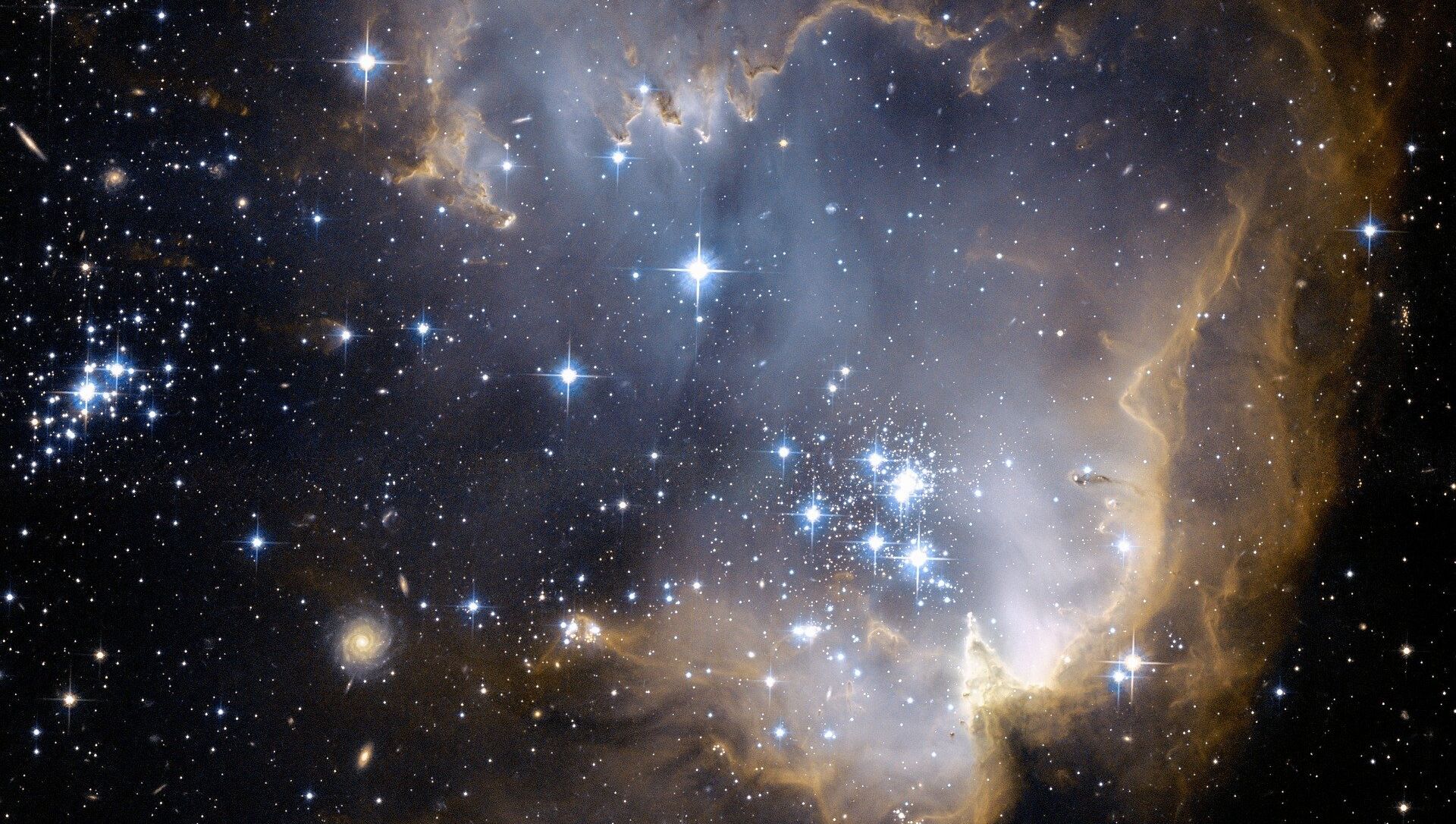https://sputnikglobe.com/20210727/secrets-of-ancient-radiation-burst-caused-by-dying-star-probed-by-scientists-1083472139.html
Secrets of Ancient Radiation Burst Caused by Dying Star Probed by Scientists
Secrets of Ancient Radiation Burst Caused by Dying Star Probed by Scientists
Sputnik International
Originally detected by NASA’s Fermi Gamma-ray Space Telescope last year, the signal only lasts about 0.65 seconds. 27.07.2021, Sputnik International
2021-07-27T16:53+0000
2021-07-27T16:53+0000
2021-07-27T16:53+0000
science & tech
society
newsfeed
gamma-ray burst
fermi gamma-ray space telescope
nature
study
https://cdn1.img.sputnikglobe.com/img/105528/87/1055288794_0:393:1920:1479_1920x0_80_0_0_0c3fa3830b2c09fa6a8e0b4e105fcdbc.jpg
Scientists have managed to gain new insight into the nature of a pulse of high-energy radiation known as a gamma-ray burst (GRB) that's been aimed at our planet “for nearly half the present age of the universe,” SciTechDaily reports.The signal, coined GRB 200826A, was originally detected in August 2020 by NASA’s Fermi Gamma-ray Space Telescope and, according to the media outlet, turned out to be the shortest GRB “caused by the death of a massive star” ever seen.Zhang also remarked that what makes GRB 200826A special is the fact that "it is definitely a short-duration GRB, but its other properties point to its origin from a collapsing star."Another new study, led by a doctoral student at the University of Maryland and NASA’s Goddard Space Flight Centre named Tomas Ahumada, focused instead on the GRB’s afterglow and the "emerging light of the supernova explosion that followed."With GRB 200826A lasting only about 0.65 seconds, researchers established that it takes its light about 6.6 billion years to reach us, which amounts to nearly half the current age of the universe.
https://sputnikglobe.com/20210521/mysterious-fast-radio-bursts-discovered-in-arms-of-spiral-galaxies-1082957152.html
Sputnik International
feedback@sputniknews.com
+74956456601
MIA „Rosiya Segodnya“
2021
News
en_EN
Sputnik International
feedback@sputniknews.com
+74956456601
MIA „Rosiya Segodnya“
Sputnik International
feedback@sputniknews.com
+74956456601
MIA „Rosiya Segodnya“
science & tech, society, newsfeed, gamma-ray burst, fermi gamma-ray space telescope, nature, study
science & tech, society, newsfeed, gamma-ray burst, fermi gamma-ray space telescope, nature, study
Secrets of Ancient Radiation Burst Caused by Dying Star Probed by Scientists
Originally detected by NASA’s Fermi Gamma-ray Space Telescope last year, the signal only lasts about 0.65 seconds.
Scientists have managed to gain new insight into the nature of a pulse of high-energy radiation known as a gamma-ray burst (GRB) that's been aimed at our planet “for nearly half the present age of the universe,” SciTechDaily reports.
The signal, coined GRB 200826A, was originally detected in August 2020 by NASA’s Fermi Gamma-ray Space Telescope and, according to the media outlet, turned out to be the shortest GRB “caused by the death of a massive star” ever seen.
"We already knew some GRBs from massive stars could register as short GRBs, but we thought this was due to instrumental limitations," said Bin-Bin Zhang from Nanjing University in China and the University of Nevada, who is the lead of a new study that delves into the gamma-ray data of the burst in question.
Zhang also remarked that what makes GRB 200826A special is the fact that "it is definitely a short-duration GRB, but its other properties point to its origin from a collapsing star."
"Now we know dying stars can produce short bursts, too," Zhang added.
Another new study, led by a doctoral student at the University of Maryland and NASA’s Goddard Space Flight Centre named Tomas Ahumada, focused instead on the GRB’s afterglow and the "emerging light of the supernova explosion that followed."
"We think this event was effectively a fizzle, one that was close to not happening at all," Ahumada said. "Even so, the burst emitted 14 million times the energy released by the entire Milky Way galaxy over the same amount of time, making it one of the most energetic short-duration GRBs ever seen."
With GRB 200826A lasting only about 0.65 seconds, researchers established that it takes its light about 6.6 billion years to reach us, which amounts to nearly half the current age of the universe.




